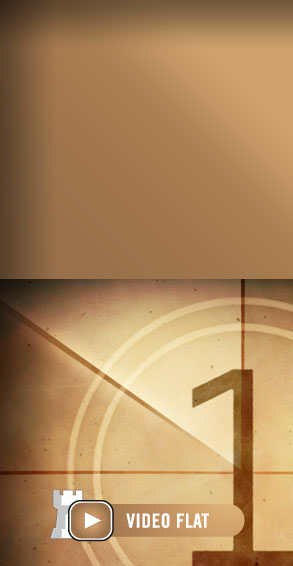
El Campeonato de Suecia 2013 tuvo lugar entre el 6 y el 14 de julio en Örebro. Fue una liga entre 10 jugadores con un control de tiempo de 90 minutos para los primeros 40 movimientos y 30 minutos para terminar la partida, con un incremento de 30 segundos por jugada. Los premios eran 25.000 Kr (4.000 USD) para el primero, 21.000 Kr para el segundo y para el 3º 17.000 Kr, etc.

El Campeonato de Suecia reunió a fuertes maestros y jóvenes talentos

El grupo magistral fue el más fuerte de la historia del torneo. Nils Grandelius se destacó.

Hasta que en la última ronda fue alcanzado por el defensor del título, Hans Tikkanen.
Grandelius también dominaba en el duelo de desempate. Podría haber ganado cualquiera de las partidas rápidas. En la primera partida de ajedrez relámpago consiguió un peón de ventaja y fue duramente castigado, pero luego devolvió el golpe en la siguiente partida. En la partida a todo o nada tenía una posición ganadora, pero pasó por alto una jugada intermedia (zwischenzug) y ya no pudo ganar. Las tablas significaban que Tikkanen era el campeón.

Grandelius quedó muy disgustado; ni quiso felicitar a su oponente

Y luego abandonó la sala de juego inmediatamente, con su maleta


Gracias al buen tiempo, el acontecimiento fue un éxito también para los aficionados que podían jugar en plena calle

Verano del bueno en Suecia con ajedrez al aire libre
La ciudad de Örebro


El castillo de Örebro
Información: Ari Ziegler
Fotos: Joakim Sparv
Traducción: Nadja Wittmann (ChessBase)
La clasificación final (9 rondas)
| Rg. |
Nombre |
Elo |
1 |
2 |
3 |
4 |
5 |
6 |
7 |
8 |
9 |
10 |
Puntos |
Des3 |
| 1 |
Tikkanen Hans |
2528 |
* |
½ |
1 |
1 |
½ |
½ |
½ |
1 |
½ |
1 |
6.5 |
27.25 |
| 2 |
Grandelius Nils |
2573 |
½ |
* |
0 |
1 |
1 |
1 |
½ |
½ |
1 |
1 |
6.5 |
26.75 |
| 3 |
Hillarp Persson T. |
2528 |
0 |
1 |
* |
½ |
1 |
½ |
½ |
½ |
1 |
0 |
5.0 |
22.25 |
| 4 |
Smith Axel |
2461 |
0 |
0 |
½ |
* |
½ |
1 |
½ |
1 |
1 |
½ |
5.0 |
18.75 |
| 5 |
Cramling Pia |
2524 |
½ |
0 |
0 |
½ |
* |
1 |
½ |
1 |
0 |
1 |
4.5 |
18.25 |
| 6 |
Wiedenkeller M. |
2475 |
½ |
0 |
½ |
0 |
0 |
* |
½ |
1 |
1 |
1 |
4.5 |
16.75 |
| 7 |
Brynell Stellan |
2484 |
½ |
½ |
½ |
½ |
½ |
½ |
* |
½ |
½ |
0 |
4.0 |
19.00 |
| 8 |
Carlsson Pontus |
2516 |
0 |
½ |
½ |
0 |
0 |
0 |
½ |
* |
1 |
½ |
3.0 |
12.25 |
| 9 |
Hector Jonny |
2509 |
½ |
0 |
0 |
0 |
1 |
0 |
½ |
0 |
* |
1 |
3.0 |
12.75 |
| 10 |
Lindberg Bengt |
2410 |
0 |
0 |
1 |
½ |
0 |
0 |
1 |
½ |
0 |
* |
3.0 |
13.00 |
Dos partidas comentadas (en inglés) por Ari Ziegler

[Event "SM 2013"]
[Site "?"]
[Date "2013.07.09"]
[Round "4.2"]
[White "Grandelius, Nils"]
[Black "Wiedenkeller, Michael"]
[Result "1-0"]
[ECO "C11"]
[WhiteElo "2573"]
[BlackElo "2475"]
[Annotator "Ari,Ziegler"]
[PlyCount "71"]
[EventDate "2013.??.??"]
[WhiteClock "0:12:03"]
[BlackClock "0:03:45"]
1. e4 e6 2. d4 d5 3. Nc3 Nf6 (3... Bb4 {In the eighties Wiedenkeller was one
of our biggest connoisseur of the Winawer. It would have been very interesting
to see him play it against the biggest star of the new generation of chess
players in Sweden.}) 4. Bg5 dxe4 {I have never liked this move. Black has no
hopes for any kind of strategic advantage. It is only about neutralising White.
In case you like to play dxe4 against the French, then 3...dxe4 offers
somewhat more flexibility.} 5. Nxe4 Nbd7 (5... Be7 6. Bxf6 Bxf6 7. Nf3 {Will
most likely transpose.}) 6. Nf3 (6. Nxf6+ Nxf6 7. Nf3 h6 {gives Black an
easier task.}) 6... Be7 7. Nxf6+ Bxf6 (7... Nxf6 {gives Black a very passive
position. One of the most normal ideas is to play ...c5, and now it has to be
associated with Qa5xc5 when White takes it, otherwise the pinBg5-d8 will be
felt.} 8. Bd3 c5 9. dxc5 Qa5+ 10. c3 Qxc5 11. Qe2 $1 {White prepares castling
on the queen's side.} Bd7 12. Ne5 Bc6 13. O-O-O O-O 14. Rhe1 {Mamedyarov-Makhar
amedyarov-Makhar amedyarov-Makharadze, Batumi 2002. And here White is clearly
better because Black can not advance with his a- and b-pawns with facing
serious tactical problems.}) 8. h4 {White's position is slightly better. In a
practical sense perhaps better. Black's problem here is the bishop on c8. It
will take time to bring it into action. During this time White will be able to
develop his pieces freely in order to exploit the way Black chooses to
liberate the bishop.} a6 $6 {This move does not solve the problem described
above, so in essence this is a loss of time.} 9. Bd3 c5 10. Qe2 {A very
aggressive choice. White decides that his lead in development is massive
enough to compensate for a centre pawn.} ({A more traditional way of meeting
the ...c5 trust is:} 10. Bxf6 Nxf6 11. dxc5 Qa5+ 12. Qd2 Qxc5 13. O-O-O Bd7 14.
Rhe1 O-O 15. Ne5 {with a comfortable edge for White. (g2-g4 is coming...)})
10... cxd4 11. O-O-O {This concept of sacrificing the d4-pawn can also be seen
in a pure form in the instructive: Vaganian-Pogonina, 2011. That game was a
Queen's Gamit declined!} Nc5 (11... O-O 12. Nxd4 Bxg5+ 13. hxg5 Qxg5+ 14. Kb1
g6 15. Nf3 $1 {And White is about to invade on the black squares.}) 12. Be4 (
12. Bc4 {gives Black the possibility to head for a more technical type of
position:} b5 13. Rxd4 Qe7 14. Bxf6 gxf6 (14... Qxf6 15. Bd5) 15. Bb3 e5 16.
Rd2 Nxb3+ 17. axb3 O-O {White is slightly better.}) 12... Bd7 (12... Qa5 {with
the idea of Queen side castling was Black's last hope:} 13. Kb1 Bd7 14. Nxd4
Bxg5 15. hxg5 Nxe4 16. Qxe4 O-O-O {But as we can see White is nevertheless on
top.}) 13. Rxd4 Rc8 {Black is hoping to solve his problems by tactical means.
This is usually not a good recepy when your opponents pieces have better
coordination.} 14. Rhd1 Qa5 $2 15. Bxf6 Qxa2 (15... gxf6 16. Kb1 Bb5 (16... e5
17. Nxe5 fxe5 18. Bc6 bxc6 19. Qxe5+ Be6 20. Qxh8+)) 16. Bd5 Qa1+ 17. Kd2 Qxb2
18. Bxg7 Rg8 {After 14...Qa5, this position was practically forced. White is
winning.} 19. Bf6 Nb3+ 20. Ke1 Rxc2 21. Qxc2 {Artistic} (21. Qe5 Nxd4 22. Nxd4
Qc3+ 23. Kf1 Rc1 24. Qb8+ Qc8 25. Qxc8+ Rxc8 26. Bxb7 {is also winning.}) 21...
Qxc2 22. Bxb3 Qxb3 23. Rc1 {Very beatiful!} (23. Rxd7 Qb4+ 24. Ke2 Qb5+ 25.
R7d3 {wins.}) 23... Qb6 {only move, but it gives White the opportunity to win
the queen back.} 24. Rxd7 Kxd7 25. Ne5+ Kd6 26. Nc4+ Kc6 27. Nxb6+ Kxb6 28. g3
{The bishop on f6 is a monster, displaying the one diagonal principle: helping
White in the attack and stops the the queenside pawns from promoting.} a5 29.
Kd2 h5 30. Kd3 Rg4 31. Bd4+ Ka6 32. Rc5 a4 33. Rxh5 f5 34. Rh6 Re4 35. f3 Re1
36. Kd2 1-0
[Event "SM 2013"]
[Site "?"]
[Date "2013.07.14"]
[Round "9.5"]
[White "Tikkanen, Hans"]
[Black "Lindberg, Bengt"]
[Result "1-0"]
[ECO "E46"]
[WhiteElo "2528"]
[BlackElo "2410"]
[Annotator "Ari Ziegler"]
[PlyCount "93"]
[EventDate "2013.??.??"]
[WhiteClock "0:17:54"]
[BlackClock "0:18:36"]
1. d4 Nf6 2. c4 e6 3. Nc3 Bb4 4. e3 O-O 5. Nge2 (5. Nf3 {is of course better,
but when you play tournaments the practical view is more valuable than the
purely academic.}) 5... d5 6. a3 Be7 7. cxd5 exd5 8. Nf4 {Black has different
ways to handle the position. When the knight goes to g3 it is far away from
the centre, and Black's best choice is then often ...c5!} (8. b4 {Is the
classical move.}) 8... c6 9. Bd3 {Black is balancing between maximum
flexibility and reaction.} Re8 ({Is} 9... Nbd7 {somewhat more flexible?}) 10.
O-O Bd6 ({more stable is} 10... Nbd7 11. f3 Nf8 12. b4 Ng6 {with equal play.})
({Surprisingly the logical} 10... a5 {don't score well.}) 11. f3 Bxf4 12. exf4
{There are many positions nowadays with double pawns for the bishop pair. One
could argue that White is risking very little here. Okay, his structure is
weakened, but the the pair of bishops will compensate it without too many
problems.} b6 {A very ambitious move. Black wants to trade the light coloured
bishops leaving White with the guy on c1, which might have some problems
finding good targets.} 13. b4 (13. f5 Ba6 14. Bxa6 Nxa6 15. Qd3 Nc7 16. Bf4 $14
) 13... Ba6 14. b5 cxb5 15. f5 {A new inspired approach to the position. White
is arguing that Black cannot seriously try to hold the b5-pawn, giving White
carte blanche on the kingside.} Nc6 16. a4 (16. Nxb5) 16... Bc8 17. axb5 Nxd4
18. g4 {So the knight is trapped! We started out fairly classical, but now the
players are completely on their own.} Qc7 19. Bd2 Bd7 (19... Bb7 {is better
for Black according to Houdini 3. Maybe it is because the knight on d4 is
trapped and must sooner or later sacrifice it self on f3, and with a bishop on
b7 Black will have some serious business a long the diagonal.}) 20. Kg2 Qc5 (
20... h5 {in order to save the knight on d4 might have been the last resort
for not coming out worse.}) 21. Qb1 h6 22. Qb2 {Ra4 and Qb4 is coming.} Nxf3
23. Rxf3 Nxg4 (23... d4 24. Ne2 Nxg4) 24. Ne2 $6 (24. Na4 $1 Qd6 25. Rg3 h5 26.
Qd4 {and thanks to White centralised pieces he is clearly better.}) 24... Ne3+
(24... Ne5 25. Rg3 f6 26. Bxh6 Kh7 $1 27. Qd2 gxh6 28. Ra4 Nc4 29. Bxc4 dxc4
30. Qxd7+ Re7 31. Qd2 Rd8 32. Qc2 {was difficult to access. How much is
Black's counterplay worth?}) 25. Bxe3 {White heads for a technical position
which looks winning or at least big practical winning chances.} (25. Kh1 $5)
25... Rxe3 26. Rc1 Qe7 27. Rxe3 Qxe3 28. Qd4 Re8 29. Qxe3 Rxe3 30. Rc7 Be8 (
30... Rxd3 31. Rxd7 Ra3 {With the idea, exchanging of one or two of the pawns
don't seems to work due to:} 32. Rd8+ $1 Kh7 33. Rxd5 g5 (33... a6 34. Rd7 Kg8
35. Ra7 $1) 34. fxg6+ fxg6 35. Rd7+ Kh8 36. Nd4) 31. Nf4 {White is winning.} g5
32. fxg6 fxg6 33. Kf2 d4 34. Bc4+ Kh8 35. Rc8 Kh7 36. Rc7+ Kh8 37. Ne6 Rc3 38.
Nxd4 Bf7 39. Rxf7 Rxc4 40. Ke3 Ra4 41. Rb7 g5 42. Ke4 a6 43. Ke5 axb5 44. Ne6
g4 45. Rb8+ Kh7 46. Kf6 g3 47. Nf8+ 1-0
Enlaces
























